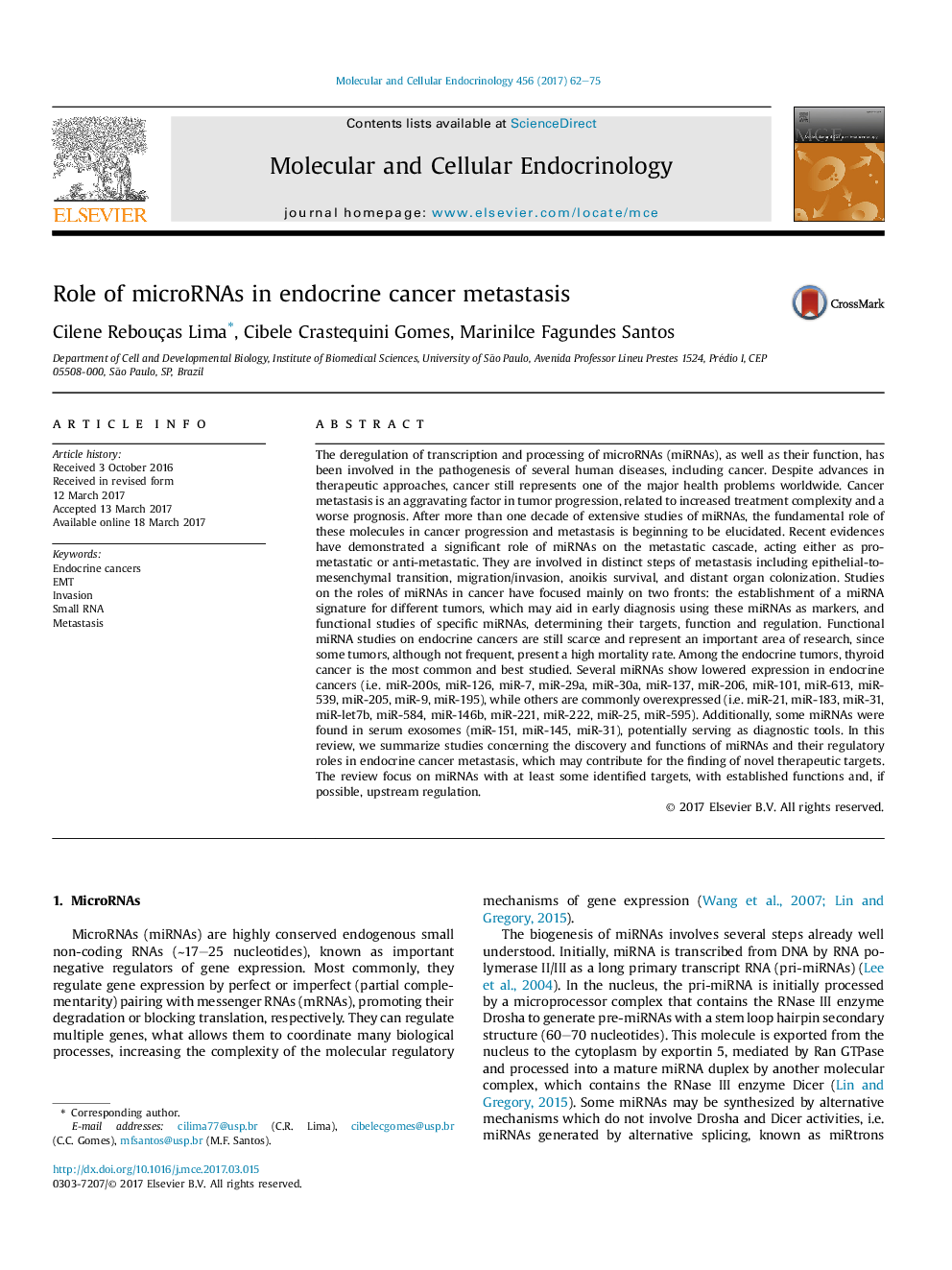| Article ID | Journal | Published Year | Pages | File Type |
|---|---|---|---|---|
| 5534001 | Molecular and Cellular Endocrinology | 2017 | 14 Pages |
â¢Deregulation of microRNAs expression and function is involved in cancer metastasis.â¢MicroRNAs may act as pro-metastatic or anti-metastatic.â¢Studies have focused on microRNA signatures and functions in specific cancers.â¢MicroRNAs may be present in serum exosomes, potentially serving as diagnostic tools.â¢MicroRNAs may aid in the identification of therapeutic targets in endocrine cancers.
The deregulation of transcription and processing of microRNAs (miRNAs), as well as their function, has been involved in the pathogenesis of several human diseases, including cancer. Despite advances in therapeutic approaches, cancer still represents one of the major health problems worldwide. Cancer metastasis is an aggravating factor in tumor progression, related to increased treatment complexity and a worse prognosis. After more than one decade of extensive studies of miRNAs, the fundamental role of these molecules in cancer progression and metastasis is beginning to be elucidated. Recent evidences have demonstrated a significant role of miRNAs on the metastatic cascade, acting either as pro-metastatic or anti-metastatic. They are involved in distinct steps of metastasis including epithelial-to-mesenchymal transition, migration/invasion, anoikis survival, and distant organ colonization. Studies on the roles of miRNAs in cancer have focused mainly on two fronts: the establishment of a miRNA signature for different tumors, which may aid in early diagnosis using these miRNAs as markers, and functional studies of specific miRNAs, determining their targets, function and regulation. Functional miRNA studies on endocrine cancers are still scarce and represent an important area of research, since some tumors, although not frequent, present a high mortality rate. Among the endocrine tumors, thyroid cancer is the most common and best studied. Several miRNAs show lowered expression in endocrine cancers (i.e. miR-200s, miR-126, miR-7, miR-29a, miR-30a, miR-137, miR-206, miR-101, miR-613, miR-539, miR-205, miR-9, miR-195), while others are commonly overexpressed (i.e. miR-21, miR-183, miR-31, miR-let7b, miR-584, miR-146b, miR-221, miR-222, miR-25, miR-595). Additionally, some miRNAs were found in serum exosomes (miR-151, miR-145, miR-31), potentially serving as diagnostic tools. In this review, we summarize studies concerning the discovery and functions of miRNAs and their regulatory roles in endocrine cancer metastasis, which may contribute for the finding of novel therapeutic targets. The review focus on miRNAs with at least some identified targets, with established functions and, if possible, upstream regulation.
